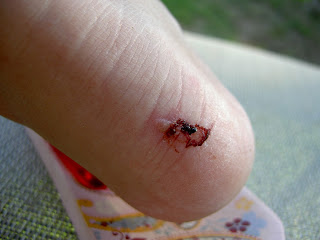Here is a three step method to help your students learn how
to pick up on what you share with them in practice. This method is called
snippet sharing. It is called snippet sharing because it requires a sender to
share little pieces of information with the receiver. Thermal electric sharing
is best understood in small fragments of an idea that can later be put together
to form a larger concept.
A one word concept is something that can convey a mental
picture, relay a feeling, or cause the receiver to match the word with an idea
that is very relative to them.
Example: An instructor can share the word concept of Envy
with their student. Envy is a universal concept. People are familiar with the
word envy, or the feeling or emotion of envy as it translates cross-culturally.
Some people have experienced being envied, or have studied others who have
envied.
Reinforcement is expounding on a one word concept in various
shares.
Example: An instructor can share ideas that are commonly
associated with a previously shared one word concept. If the instructor shared
the concept of Envy, then they may reinforce the concept with a story title
associated with Envy, such as the fabled Cain & Able from the Bible.
Reintroducing a one word concept is giving a different
introduction to a one word concept previously shared.
Example: An instructor can reintroduce a previously shared,
one word concept by redefining the concept. If the instructor previously shared
the concept of Envy, then they can reintroduce the concept by sharing an
uncommon concept about the emotion like, no
one envies rich people. It is a commonly held belief that if a person is
not rich, then they wish to be. Sharing an opposing idea will reintroduce the
one word concept as applicable to different situations.
A one word concept is a word or idea that can be described
as a phrase, visualized as a mental picture, or summed up as an emotion. The importance
of learning how to identify a one word concept is to allow a student to later
recall the concept when communicating through thermal electric sharing. Practicing
with snippet sharing helps students learn how to recognize thermal electric
sharing, and identify the content of a thermal electric communication.



























